Search Result
Results for "
Mycobacteria
" in MedChemExpress (MCE) Product Catalog:
1
Isotope-Labeled Compounds
| Cat. No. |
Product Name |
Target |
Research Areas |
Chemical Structure |
-
- HY-B0329
-
|
INH; Isonicotinic acid hydrazide; Isonicotinic hydrazide
|
Bacterial
Autophagy
Mitophagy
Antibiotic
|
Infection
|
|
Isoniazid (INH) is a proagent and must be activated by a bacterial catalase-peroxidase enzyme KatG. Isoniazid is bactericidal to rapidly dividing mycobacteria and has anti-tuberculostatic activity .
|
-
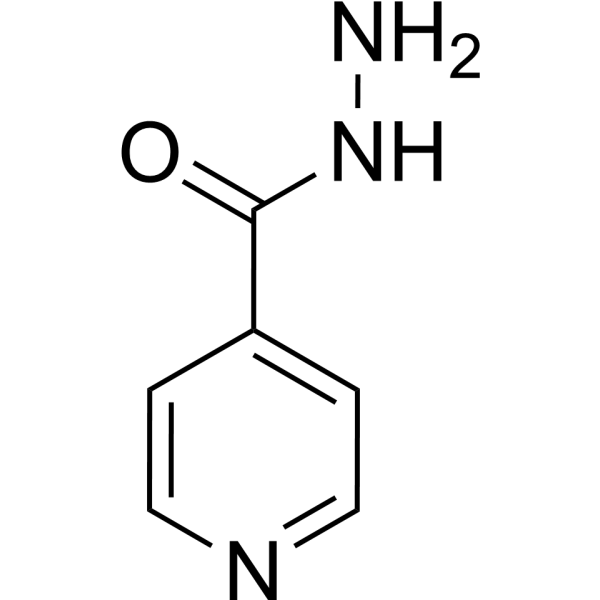
-
- HY-B0901A
-
|
R-11333 hydrochloride
|
Dopamine Receptor
Bacterial
|
Neurological Disease
|
|
Bromperidol (R-11333) hydrochloride possesses antipsychotic activity, with a high affinity for central dopamine receptors D2. Bromperidol hydrochloride can kill Mycobacteria in a synergistic manner with Spectinomycin .
|
-
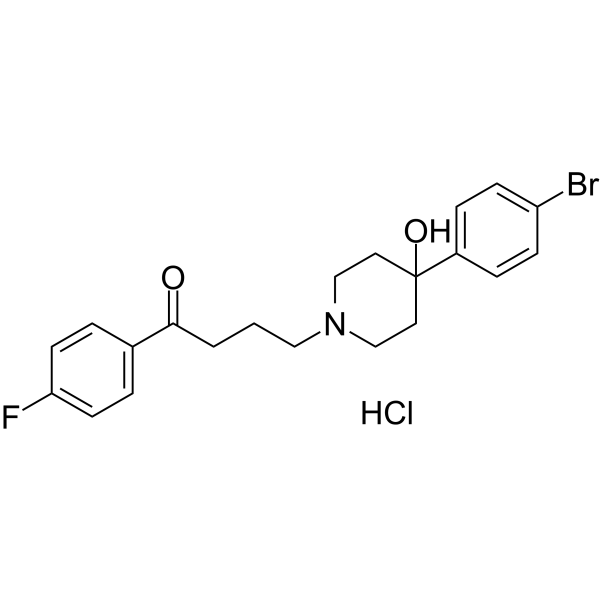
-
- HY-B0901
-
-

-
- HY-120342
-
|
|
Bacterial
|
Infection
|
|
Mycothiol is a major low molecular-mass thiol that exists in mycobacteria. Mycothiol is an intracellular reducing agent .
|
-
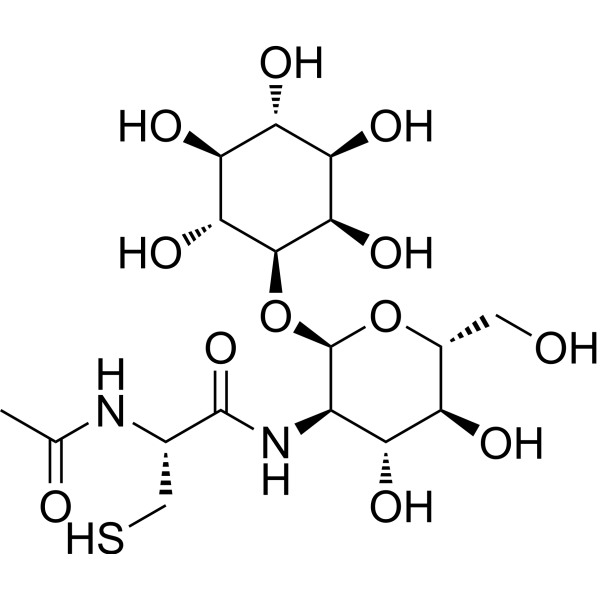
-
- HY-161135
-
|
|
Bacterial
|
Infection
|
|
TBAJ-5307 is a broad spectrum anti-non-tuberculous mycobacteria inhibitor that can target the FO-domain of the engine and preventing rotation and proton-translocation. TBAJ-5307 inhibits non-tuberculous mycobacteria in vitro and in vivo .
|
-
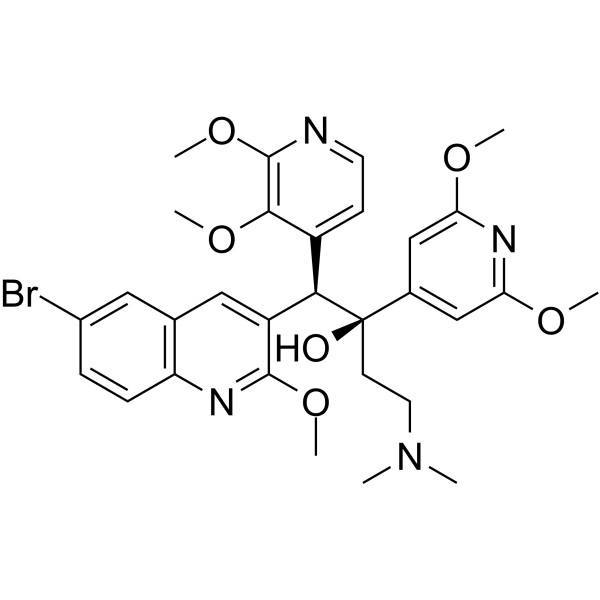
-
- HY-146702
-
|
|
Bacterial
Thymidylate Synthase
|
Infection
|
|
MtTMPK-IN-8 (compound 27) is a moderate M. tuberculosis thymidylate kinase (MtbTMPK) inhibitor. MtTMPK-IN-8 has sub-micromolar activity against mycobacteria (MICs = 0.78~9.4 μM) without significant cytotoxicity. MtTMPK-IN-8 can be used for researching tuberculosis .
|
-
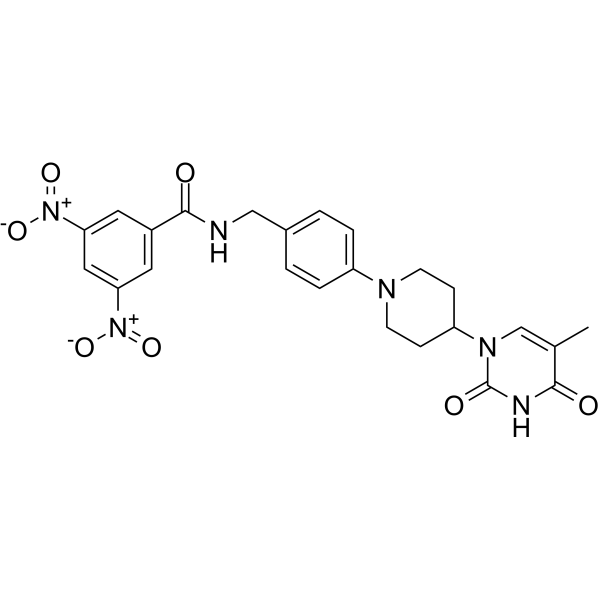
-
- HY-146703
-
|
|
Bacterial
Thymidylate Synthase
|
Infection
|
|
MtTMPK-IN-9 (compound 28) is a moderate M. tuberculosis thymidylate kinase (MtbTMPK) inhibitor with an IC50 value of 48 μM. MtTMPK-IN-9 has sub-micromolar activity against mycobacteria (MICs = 6.25~9.4 μM) without significant cytotoxicity. MtTMPK-IN-9 can be used for researching tuberculosis .
|
-
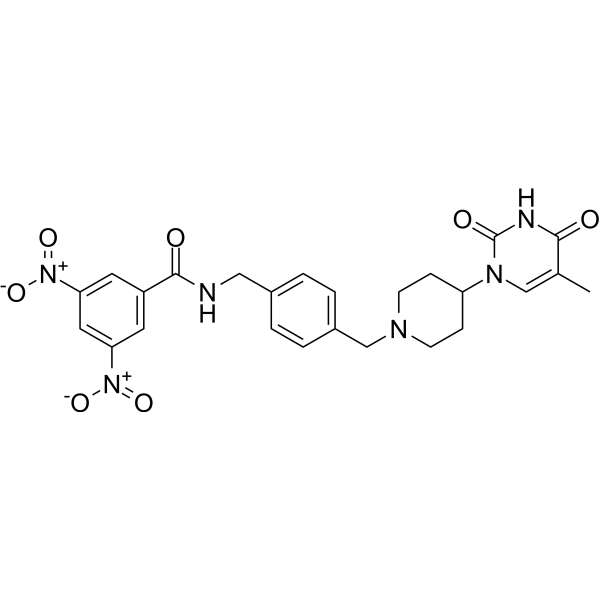
-
- HY-146701
-
|
|
Bacterial
Thymidylate Synthase
|
Infection
|
|
MtTMPK-IN-7 (compound 26) is a moderate M. tuberculosis thymidylate kinase (MtbTMPK) inhibitor with an IC50 value of 47 μM. MtTMPK-IN-7 has sub-micromolar activity against mycobacteria (MICs = 2.3~4.7 μM) without significant cytotoxicity. MtTMPK-IN-7 can be used for researching tuberculosis .
|
-
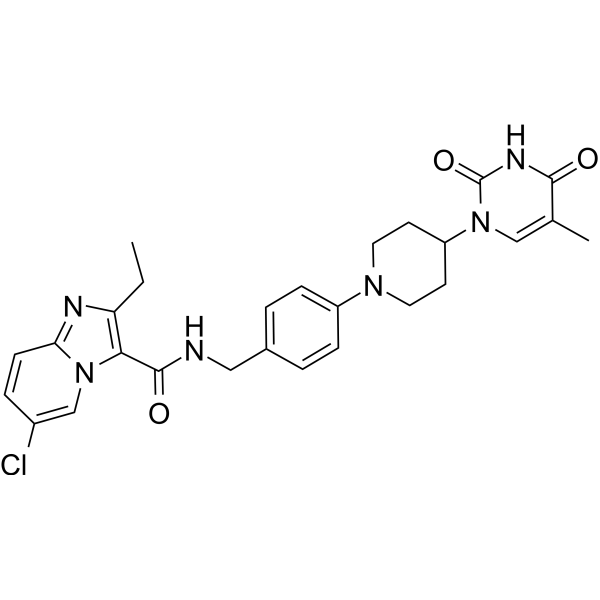
-
- HY-148478
-
|
(R)-GSK1729177A
|
DNA/RNA Synthesis
|
Infection
|
|
MMV688845 is a nontuberculous mycobacteria (NTM) RNA polymerase inhibitor with bactericidal activity against Mycobacterium abscessus and anti-tuberculosis efficacy .
|
-
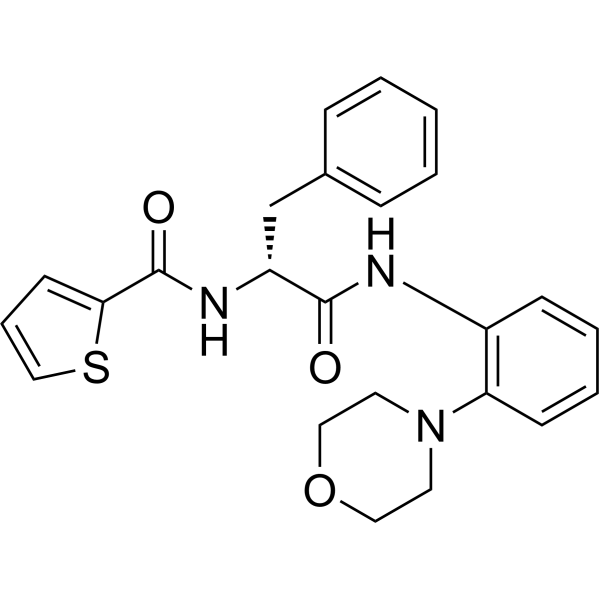
-
- HY-145301
-
|
|
Bacterial
|
Infection
|
|
Mycobactin-IN-1 (compound 44), a pyrazoline analogue, is a mycobactin biosynthesis inhibitor against mycobacteria. Mycobactin-IN-1 binds to salicyl-AMP ligase (MbtA), a key enzyme in the mycobactin biosynthetic pathway .
|
-
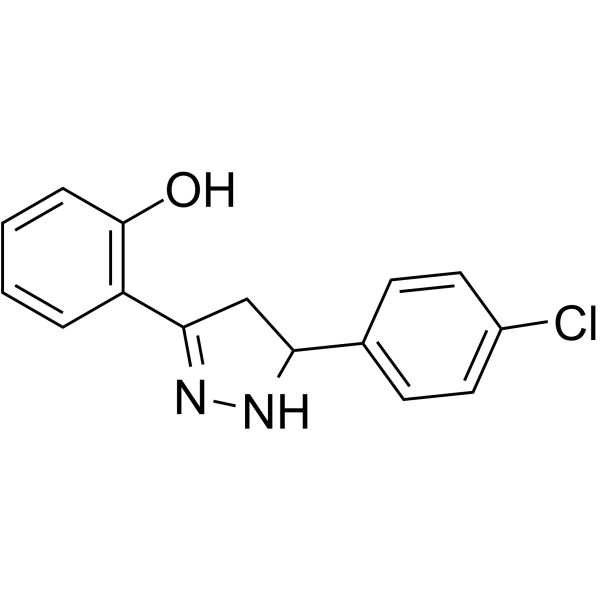
-
- HY-118481
-
|
|
Others
|
Infection
|
|
H-Pro-Glu-OH is a protein secreted by pathogenic mycobacteria through the Type VII secretion system. H-Pro-Glu-OH targets LipY lipases to the cell Surface via the ESX-5 Pathway .
|
-
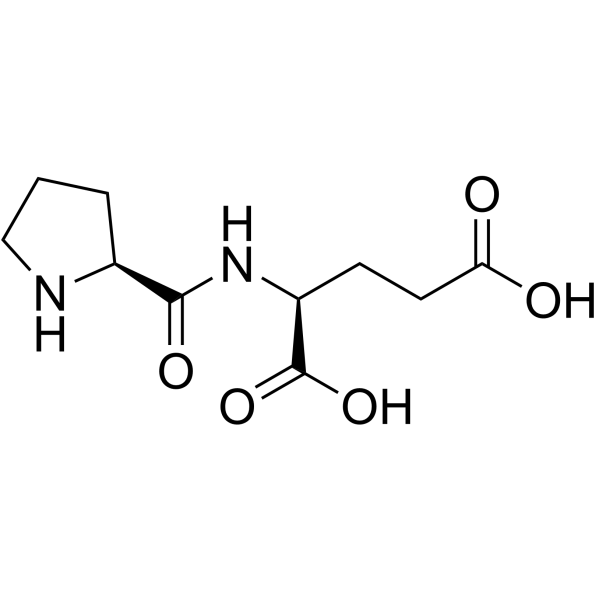
-
- HY-120733
-
|
FKI-4905
|
Bacterial
Endogenous Metabolite
|
Infection
Inflammation/Immunology
|
|
Calpinactam (FKI-4905), a fungal metabolite, is a new anti-mycobacterial agent.Calpinactam is active only against Mycobacteria among various microorganisms, including Gram-positive and Gram-negative bacteria, fungi and yeasts. Calpinactam inhibits the growth of Mycobacterium smegmatis and Mycobacterium tuberculosis with MIC values of 0.78 and 12.5 μg/ml, respectively .
|
-
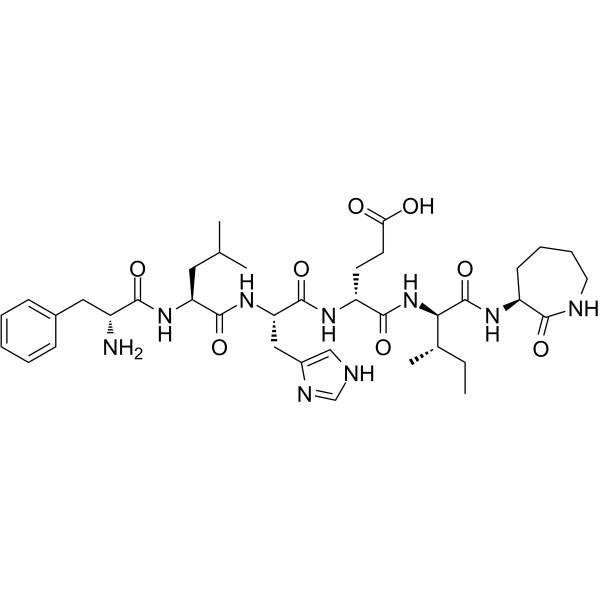
-
- HY-121136
-
|
|
Antibiotic
Bacterial
|
Infection
|
|
Chartreusin is an antibiotic that is active against certain Gram-positive organisms and mycobacteria. Chartreusin is also active against the Micrococcus fiyogenes v. aureus phage .
|
-
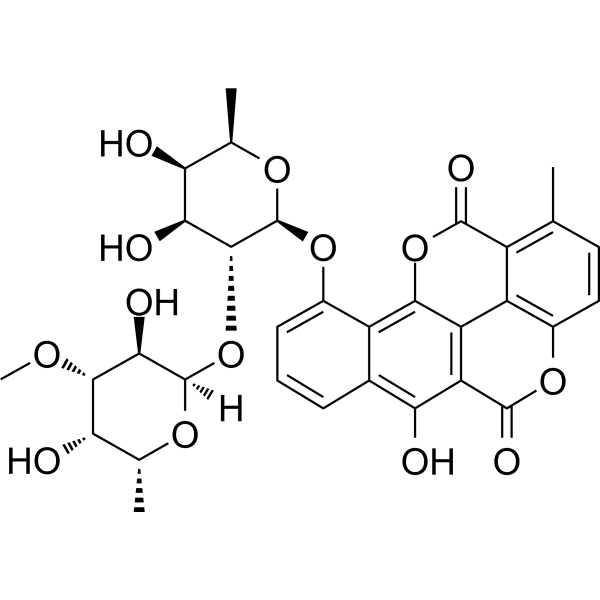
-
- HY-156359
-
|
|
Others
|
Others
|
|
Tuberculosis inhibitor 10 shows moderate inhibitory effect on the enzymatic activity of MSMEG_6649. Tuberculosis inhibitor 10 enhances the inhibitory activity of PAS against mycobacteria .
|
-

-
- HY-D1543
-
|
|
DNA Stain
|
Infection
|
|
Pyronin B is an organic cationic dye used for the staining of bacteria, mycobacteria and ribonucleic acids. Pyronin B is also used as a small hydrophobic (SH) protein channel inhibitor .
|
-
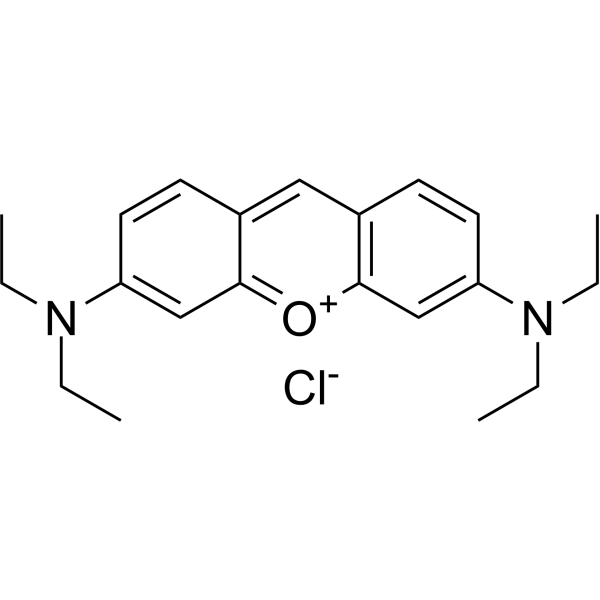
-
- HY-145302
-
|
|
Bacterial
|
Infection
|
|
Mycobactin-IN-2 (compound 49) is a mycobactin biosynthesis inhibitor against mycobacteria. Mycobactin-IN-2 binds to salicyl-AMP ligase (MbtA), a key enzyme in the mycobactin biosynthetic pathway .
|
-

-
- HY-A0155
-
|
|
|
|
|
Viomycin is a potent antibiotic against Mycobacteria. Viomycin rapidly inhibits polypeptide chain elongation when added to purified endogenous Escherichia coli polysomes actively engaged in polypeptide synthesis .
|
-
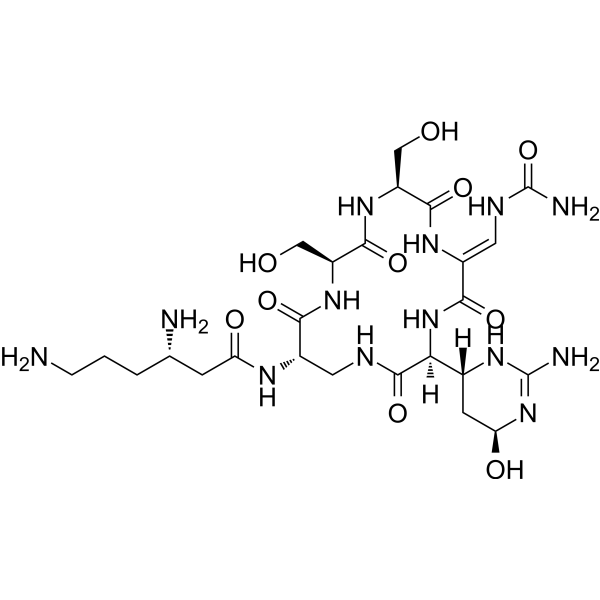
-
- HY-146699
-
|
|
Bacterial
Thymidylate Synthase
|
Infection
|
|
MtTMPK-IN-5 (compound 17) is a potent M. tuberculosis thymidylate kinase (MtbTMPK) inhibitor with an IC50 value of 34 μM. MtTMPK-IN-5 combines favorable enzyme inhibitory activity with significant activity against M. tuberculosis (MIC = 12.5 μM). MtTMPK-IN-5 can be used for researching tuberculosis .
|
-
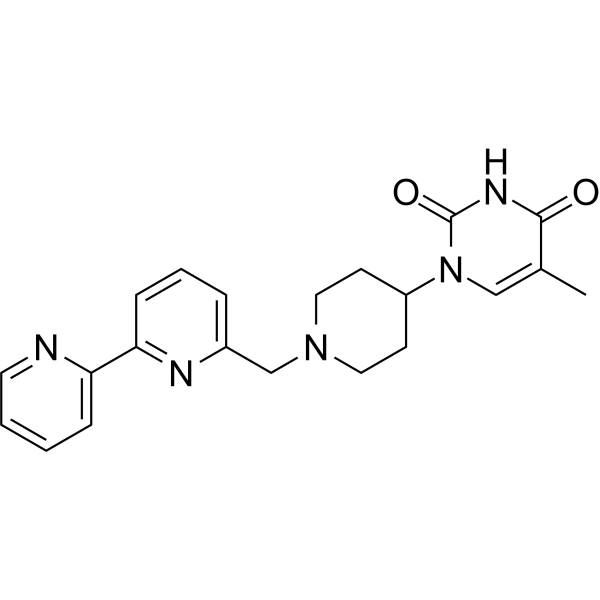
-
- HY-146700
-
|
|
Bacterial
Thymidylate Synthase
|
Infection
|
|
MtTMPK-IN-6 (compound 1) is a potent M. tuberculosis thymidylate kinase (MtbTMPK) inhibitor with an IC50 value of 29 μM. MtTMPK-IN-6 can be used for researching tuberculosis .
|
-
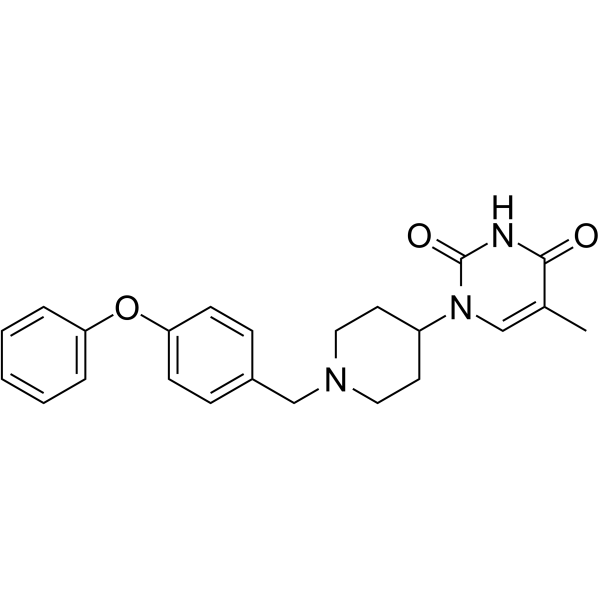
-
- HY-10392
-
|
PNU-100480; U-100480; PF-02341272
|
Bacterial
Antibiotic
|
Infection
|
|
Sutezolid (PNU-100480), an orally active oxazolidinone antimicrobial agent, acts by inhibiting bacterial protein synthesis. Sutezolid has potent activity against mycobacteria, and is used for the research of drug-resistant tuberculosis .
|
-

-
- HY-122289
-
|
|
Dihydrofolate reductase (DHFR)
Bacterial
|
Infection
|
|
Metioprim is a competitive inhibitor of bacterial Dihydrofolate reductase (DHFR). Metioprim has inhibitory activity against anaerobic bacteria. Metioprim shows synergistic activity in combination with DDS (HY-B0688) against E. coli. and various mycobacteria .
|
-
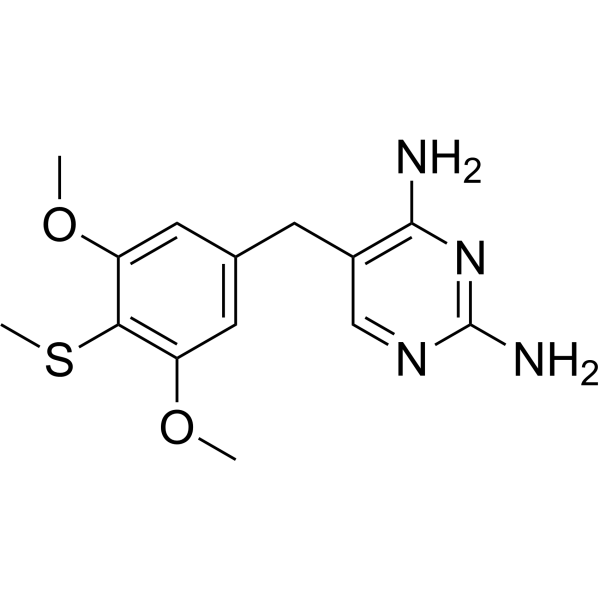
-
- HY-B0329S
-
|
INH-d4; Isonicotinic acid hydrazide-d4; Isonicotinic hydrazide-d4
|
Bacterial
Autophagy
Mitophagy
Antibiotic
|
Infection
|
|
Isoniazid-d4 is the deuterium labeled Isoniazid. Isoniazid (INH) is a proagent and must be activated by a bacterial catalase-peroxidase enzyme KatG. Isoniazid is bactericidal to rapidly dividing mycobacteria and has anti-tuberculostatic activity[1][2][3][4].
|
-
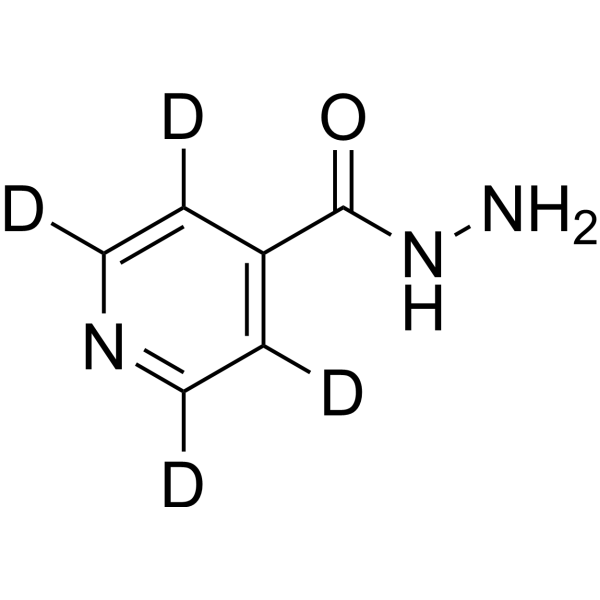
-
- HY-B0901R
-
|
R-11333 (Standard)
|
Dopamine Receptor
Bacterial
|
Infection
Neurological Disease
|
|
Bromperidol (Standard) is the analytical standard of Bromperidol. This product is intended for research and analytical applications. Bromperidol (R-11333) possesses antipsychotic activity, with a high affinity for central dopamine receptors D2. Bromperidol can kill Mycobacteria in a synergistic manner with Spectinomycin .
|
-
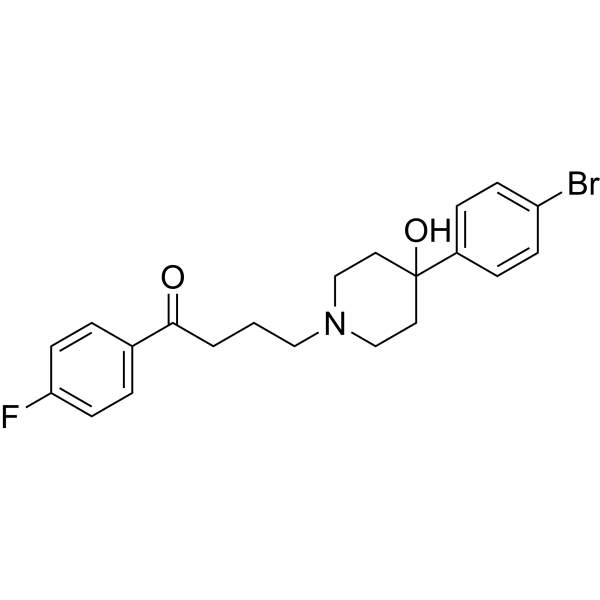
-
- HY-N1969
-
|
3,8-Di-O-methylellagic acid
|
|
|
|
3,3'-Di-O-methylellagic acid obtained from Euphorbia adenochlora selectively inhibits the formation of acid-fastness in mycobacteria without retardation of their growth. 3,3'-di-O-methylellagic acid as a hepatoprotective compound is apparently due to its antioxidative effect .
|
-
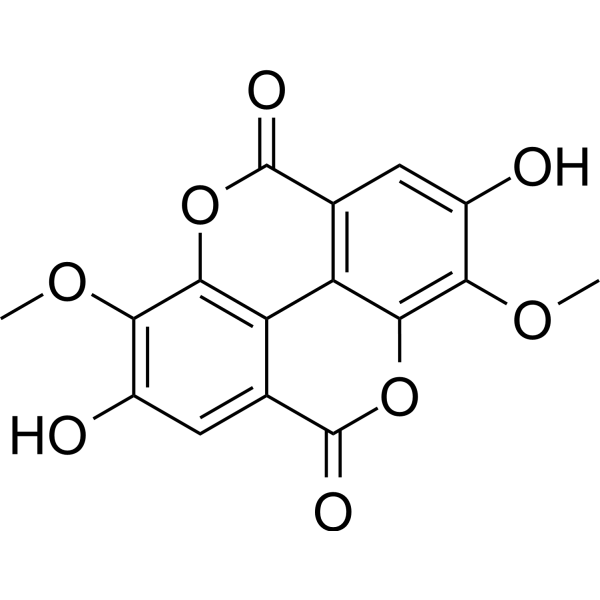
-
- HY-100725
-
BM212
3 Publications Verification
|
Bacterial
|
Infection
|
|
BM212 is a potent Mycobacterial membrane protein Large 3 (MmpL3) inhibitor. BM212 has strong bactericidal activity against both M. tuberculosis and some nontuberculosis mycobacteria. BM212 exhibits antimycobacterial activity against M. tuberculosis H37Rv with an MIC of 5 µM .
|
-

-
- HY-144663
-
|
|
Bacterial
Thymidylate Synthase
|
Infection
|
|
MtTMPK-IN-1 (compound 3) is a potent Mycobacterium tuberculosis thymidylate kinase (MtTMPK) inhibitor with an IC50 value of 2.5 μM. MtTMPK-IN-1 has moderate to weak activity against Mtb H37Rv and low cytotoxicity in human fibroblast cells MRC-5. MtTMPK-IN-1 can be used for researching tuberculosis .
|
-

-
- HY-144664
-
|
|
Bacterial
Thymidylate Synthase
|
Infection
|
|
MtTMPK-IN-2 (compound 15) is a potent Mycobacterium tuberculosis thymidylate kinase (MtTMPK) inhibitor with an IC50 value of 1.1 μM. MtTMPK-IN-2 has inhibitory activity against Mtb H37Rv (MIC = 12.5 μM). MtTMPK-IN-2 exhibits certain cytotoxicity in human fibroblast cells MRC-5 (EC50 = 6.1 μM). MtTMPK-IN-2 can be used for researching tuberculosis .
|
-
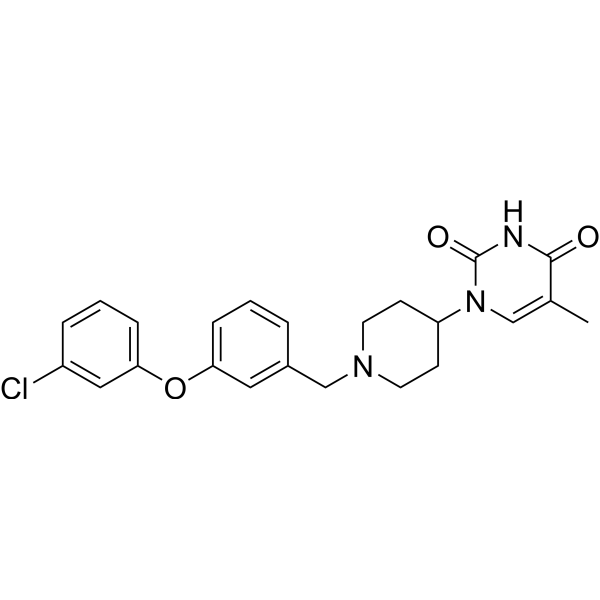
-
- HY-144665
-
|
|
Bacterial
Thymidylate Synthase
|
Infection
|
|
MtTMPK-IN-3 (compound 25) is a potent Mycobacterium tuberculosis thymidylate kinase (MtTMPK) inhibitor with an IC50 value of 0.12 μM. MtTMPK-IN-3 has inhibitory activity against Mtb H37Rv (MIC = 12.5 μM). MtTMPK-IN-3 exhibits certain cytotoxicity in human fibroblast cells MRC-5 (EC50 = 12.5 μM). MtTMPK-IN-3 can be used for researching tuberculosis .
|
-
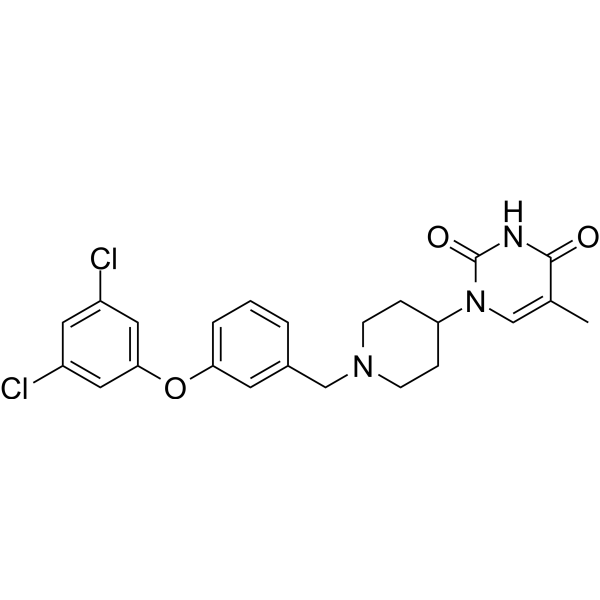
-
- HY-N10069
-
|
|
Others
|
Infection
|
|
Bonducellin is a a homoisoflavonoid, which can be isolated from Caesalpinia digyna roots. Bonducellin is a potent inhibitor of efflux pump (EP), while EP induces resistance in mycobacteria and serves as a target of anti-TB (tuberculosis) agents. Bonducellin reduces MIC of EtBr by 8-fold against M. smegmatis (MIC=62.5 mg/L) .
|
-

-
- HY-B0509
-
|
BAY 41-6551 hydrate
|
Bacterial
Antibiotic
|
Infection
Cancer
|
|
Amikacin hydrate (BAY 41-6551 hydrate) is an aminoglycoside antibiotic and a semisynthetic analog of kanamycin. Amikacin hydrate is bactericidal, acting directly on the 30S and 50S bacerial ribosomal subunits to inhibit protein synthesis. Amikacin hydrate is very active against most Gram-negative bacteria including gentamicin- and tobramycin-resistant strains. Amikacin hydrate also inhibits the infections caused by susceptible Nocardia and nontuberculous mycobacteria .
|
-
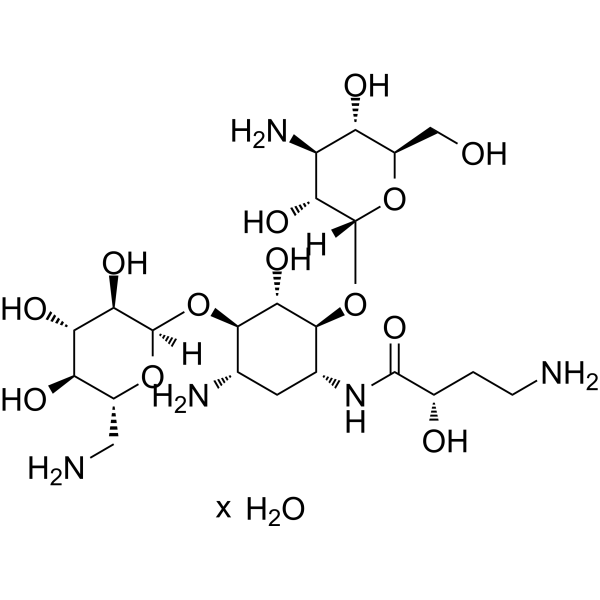
-
- HY-B0509B
-
|
BAY 41-6551 disulfate
|
Bacterial
Antibiotic
|
Infection
Cancer
|
|
Amikacin disulfate (BAY 41-6551 dissulfate) is an aminoglycoside antibiotic and a semisynthetic analog of kanamycin. Amikacin disulfate is bactericidal, acting directly on the 30S and 50S bacerial ribosomal subunits to inhibit protein synthesis. Amikacin disulfate is very active against most Gram-negative bacteria including gentamicin- and tobramycin-resistant strains. Amikacin disulfate also inhibits the infections caused by susceptible Nocardia and nontuberculous mycobacteria .
|
-
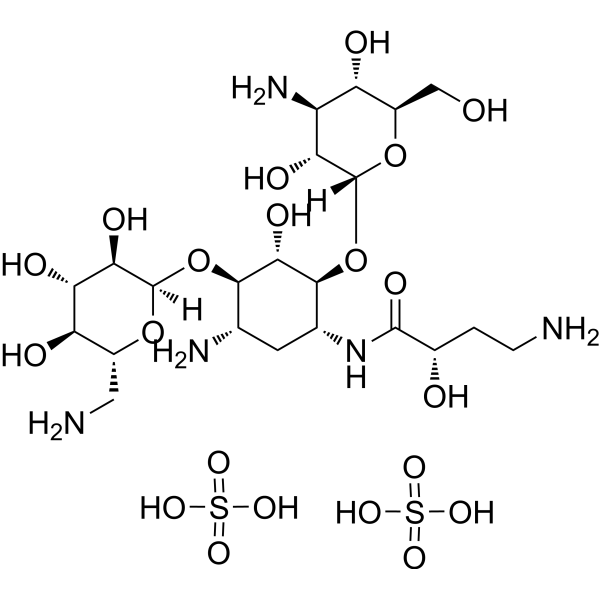
-
- HY-107813
-
|
BAY 41-6551 sulfate
|
Bacterial
Antibiotic
|
Infection
Cancer
|
|
Amikacin sulfate (BAY 41-6551 sulfate) is an aminoglycoside antibiotic and a semisynthetic analog of kanamycin. Amikacin sulfate is bactericidal, acting directly on the 30S and 50S bacerial ribosomal subunits to inhibit protein synthesis. Amikacin sulfate is very active against most Gram-negative bacteria including gentamicin- and tobramycin-resistant strains. Amikacin sulfate also inhibits the infections caused by susceptible Nocardia and nontuberculous mycobacteria .
|
-

-
- HY-122292
-
|
|
Antibiotic
Bacterial
|
Infection
Inflammation/Immunology
|
|
Celastramycin A is an antibiotic isolated from Streptomyces MaB-QuH-8, which exhibits antimicrobial activity against series of gram-negative bacteria and mycobacteria, with MICs between 0.05-3.1 μg/ml . Celastramycin A exhibits immunosuppressing efficacy in ex vivo Drosophila through immune deficiency pathway (IC50 of 0.008 μg/ml), inhibits the immunoresponse in human innate immunity through TNF-α signaling, inhibits IL-8 production in HUEVCs with IC50 of 0.06 μg/ml .
|
-
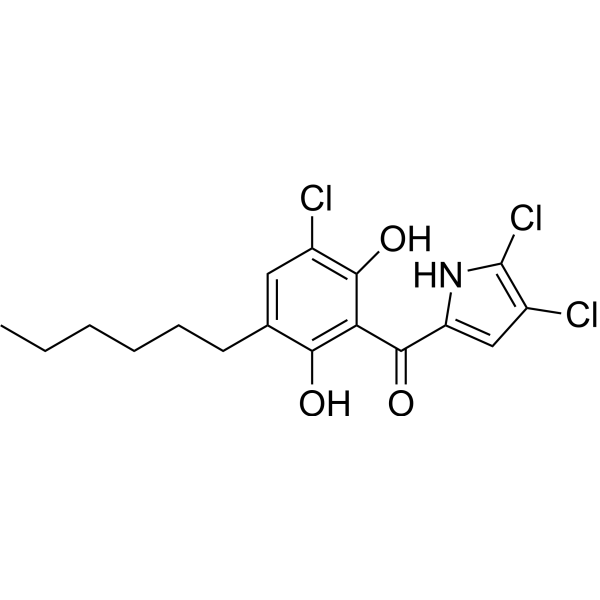
-
- HY-155639
-
|
|
Others
|
Others
|
|
Tyramide alkyne is an alternative labeling substrate that can be coupled to detection or enrichment moieties via a Copper-catalyzed Azide/Alkyne Cycloaddition (CuAAC) “click” reaction. Tyramide alkyne can be used for ascorbate peroxidase 2 (APEX2) labeling .
|
-

-
- HY-16566A
-
|
Kanamycin A sulfate
|
Bacterial
Antibiotic
|
Infection
|
|
Kanamycin (Kanamycin A) sulfate is an orally active antibacterial (gram-negative/positive bacteria) agent, inhibits translocation and causes misencoding by binding to the 70 S ribosomal subunit. Kanamycin sulfate shows good inhibitory activity to both M. tuberculosis (sensitive and drug-resistant ) and K. pneumonia, which can be used in studies of tuberculosis and pneumonia .
|
-
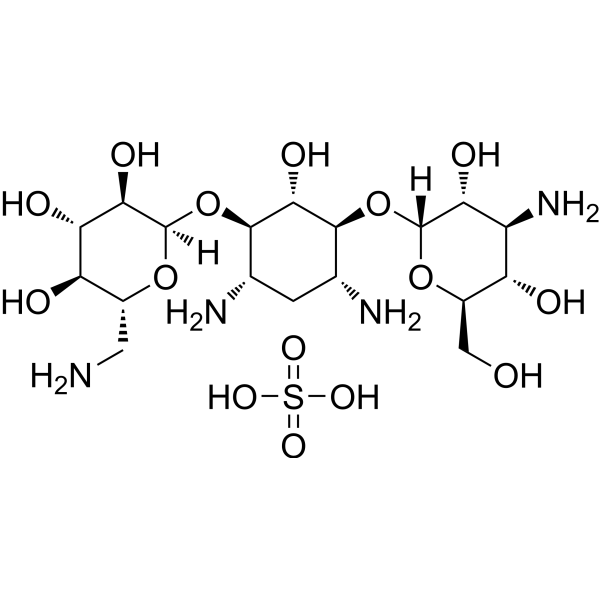
-
- HY-16566
-
|
Kanamycin A
|
Antibiotic
Bacterial
|
Infection
Inflammation/Immunology
|
|
Kanamycin (Kanamycin A) is an orally active antibacterial (gram-negative/positive bacteria) agent, inhibits translocation and causes misencoding by binding to the 70 S ribosomal subunit. Kanamycin shows good inhibitory activity to both M. tuberculosis (sensitive and drug-resistant ) and K. pneumonia, which can be used in studies of tuberculosis and pneumonia .
|
-
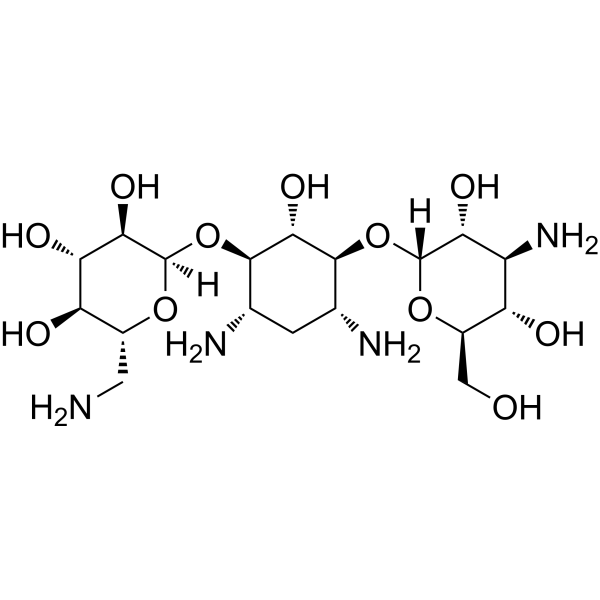
-
- HY-105099
-
|
KRM-1648; ABI-1648
|
DNA/RNA Synthesis
Bacterial
|
Infection
Inflammation/Immunology
|
|
Rifalazil (KRM-1648; ABI-1648), a rifamycin derivative, inhibits the bacterial DNA-dependent RNA polymerase and kills bacterial cells by blocking off the β-subunit in RNA polymerase . Rifalazil (KRM-1648; ABI-1648) is an antibiotic, exhibits high potency against mycobacteria, gram-positive bacteria, Helicobacter pylori, C. pneumoniae and C. trachomatis with MIC values from 0.00025 to 0.0025 μg/ml . Rifalazil (KRM-1648; ABI-1648) has the potential for the treatment of Chlamydia infection, Clostridium difficile associated diarrhea (CDAD), and tuberculosis (TB) .
|
-
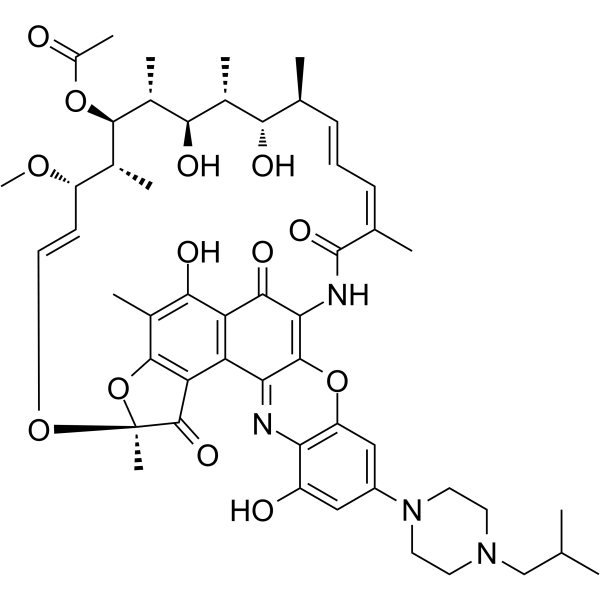
-
- HY-157433
-
|
|
Bacterial
|
Infection
|
|
Mab-SaS-IN-1 (compoud 1H) is Mab-SaS inhibitor with the IC50 of 2 μM. Mab-SaS-IN-1 can be used for study of antibiosis by blocking iron uptake and metabolism .
|
-
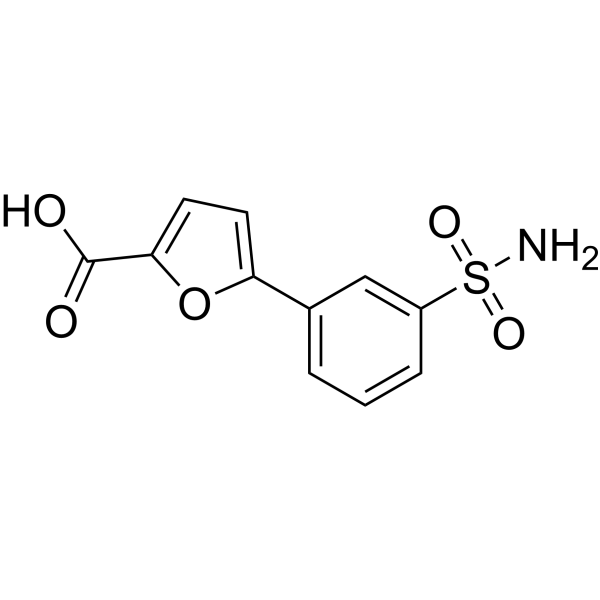
| Cat. No. |
Product Name |
Type |
-
- HY-D1543
-
|
|
Fluorescent Dyes/Probes
|
|
Pyronin B is an organic cationic dye used for the staining of bacteria, mycobacteria and ribonucleic acids. Pyronin B is also used as a small hydrophobic (SH) protein channel inhibitor .
|
| Cat. No. |
Product Name |
Category |
Target |
Chemical Structure |
| Cat. No. |
Product Name |
Chemical Structure |
-
- HY-B0329S
-
|
|
|
Isoniazid-d4 is the deuterium labeled Isoniazid. Isoniazid (INH) is a proagent and must be activated by a bacterial catalase-peroxidase enzyme KatG. Isoniazid is bactericidal to rapidly dividing mycobacteria and has anti-tuberculostatic activity[1][2][3][4].
|
-

Your information is safe with us. * Required Fields.
Inquiry Information
- Product Name:
- Cat. No.:
- Quantity:
- MCE Japan Authorized Agent:














































